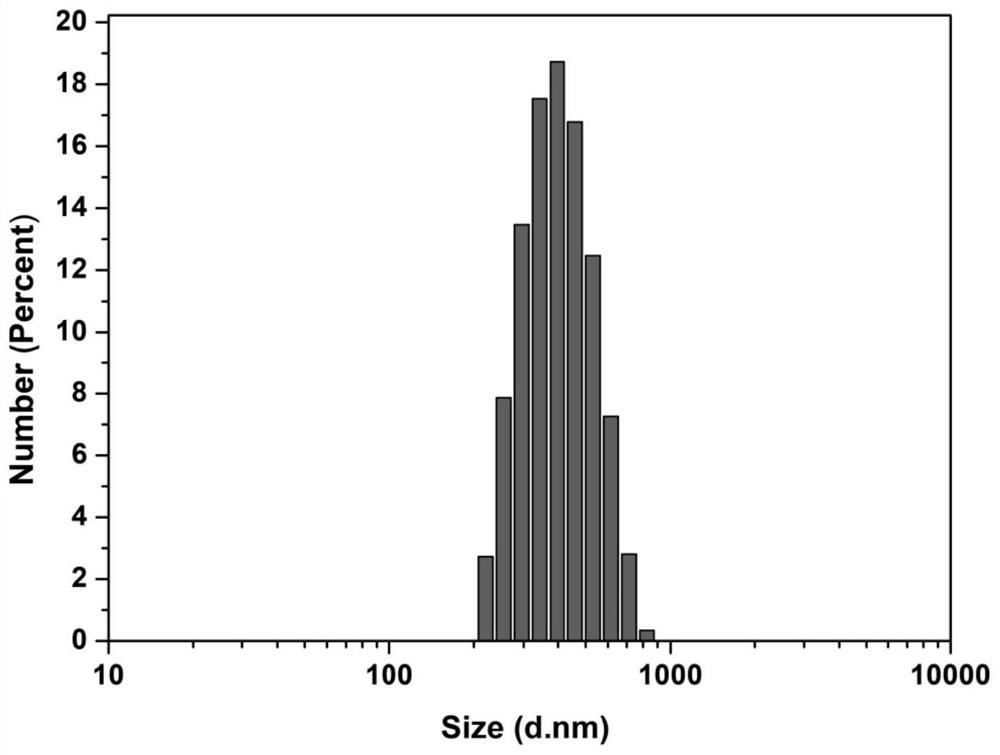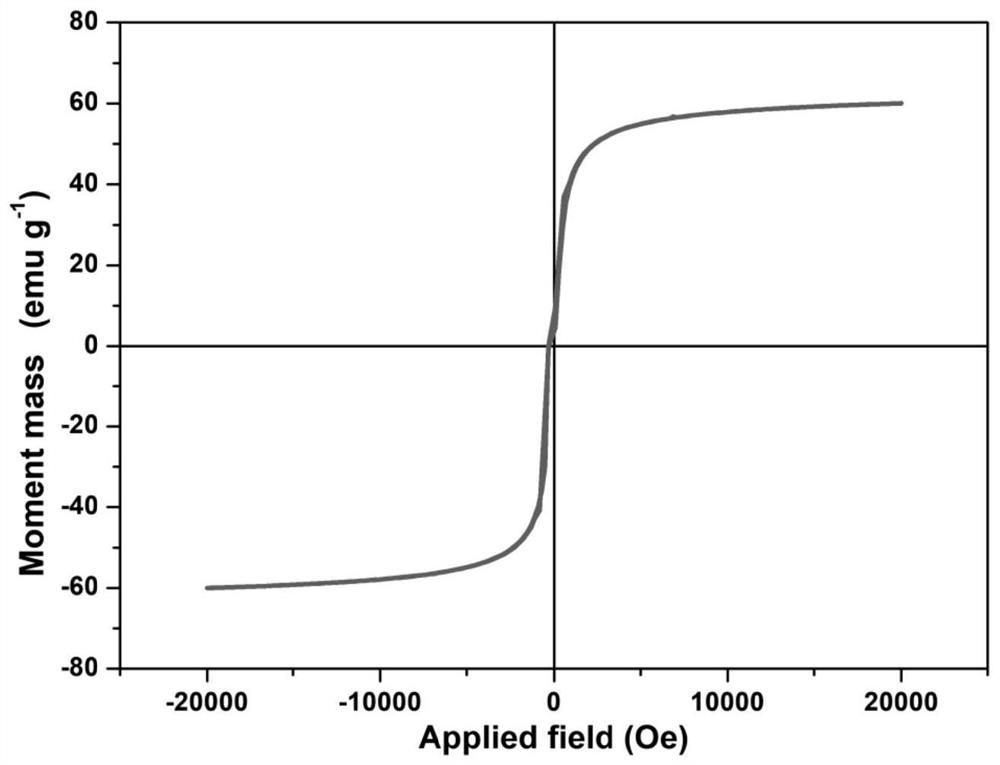Method for releasing bionic magnetic vesicles based on macrophages and application of bionic magnetic vesicles
A macrophage and magnetic technology, applied in the field of biomedical materials, can solve the problems of protein loss, affecting physiological characteristics, cell membrane structure damage, etc., and achieve the effect of simple conditions, good magnetic response performance, and good dispersion
- Summary
- Abstract
- Description
- Claims
- Application Information
AI Technical Summary
Problems solved by technology
Method used
Image
Examples
Embodiment 1
[0048] A preferred embodiment of the present invention provides a method for releasing biomimetic magnetic vesicles based on macrophages, the specific steps are as follows:
[0049] (1) Superparamagnetic Fe3O4 nanoparticles (Fe 3 o 4 NPs) preparation
[0050] FeCl 3 ·6H 2 O was dissolved in ethylene glycol, and sodium citrate (Na 3 CT), and finally ammonium acetate (NH 4 Ac), after magnetically stirring for 1 h, the mixture was transferred to a stainless steel autoclave, and kept at 200° C. for 16 h. After cooling, the sediment was collected by magnetic separation, washed thoroughly with ethanol and deionized water 4 times, and finally magnetically separated to obtain Fe 3 o 4 Nanoparticles Superparamagnetic Fe3O4 nanoparticles; where FeCl 3 ·6H 2 O, Na 3 CT, NH 4 The mass ratio of Ac is 2.89:1:8.26. Determination of particle size and surface potential of drug-loaded hybrid nanoparticles by Malvern laser particle size analyzer, Fe 3 o 4 The particle size distri...
Embodiment 2
[0060] A preferred embodiment of the present invention provides a method for releasing biomimetic magnetic vesicles based on macrophages, the specific steps are as follows:
[0061] (1) Superparamagnetic Fe3O4 nanoparticles (Fe 3 o 4 NPs) preparation
[0062] FeCl 3 ·6H 2 O was dissolved in ethylene glycol, and sodium citrate (Na 3 CT), and finally ammonium acetate (NH 4 Ac), after magnetically stirring for 2 h, the mixture was transferred to a stainless steel autoclave, and kept at 200° C. for 18 h. After cooling, the sediment was collected by magnetic separation, washed thoroughly with ethanol and deionized water three times, and finally magnetically separated to obtain Fe 3 o 4 Nanoparticles Superparamagnetic Fe3O4 nanoparticles; where FeCl 3 ·6H 2 O, Na 3 CT, NH 4 The mass ratio of Ac is 2.93:1:8.51.
[0063] (2) Culture of mouse macrophages (J774A.1)
[0064] Mouse macrophage J774A.1 was cultured in DMEM complete medium containing 10wt% fetal bovine serum an...
Embodiment 3
[0072] A preferred embodiment of the present invention provides a method for releasing biomimetic magnetic vesicles based on macrophages, the specific steps are as follows:
[0073] (1) Superparamagnetic Fe3O4 nanoparticles (Fe 3 o 4 NPs) preparation
[0074] FeCl 3 ·6H 2 O was dissolved in ethylene glycol, and sodium citrate (Na 3 CT), and finally ammonium acetate (NH 4 Ac), after magnetically stirring for 1 h, the mixture was transferred to a stainless steel autoclave, and kept at 200° C. for 17 h. After cooling, the sediment was collected by magnetic separation, washed thoroughly with ethanol and deionized water 4 times, and finally magnetically separated to obtain Fe 3 o 4 Nanoparticles Superparamagnetic Fe3O4 nanoparticles; where FeCl 3 ·6H 2 O, Na 3 CT, NH 4 The mass ratio of Ac is 2.86:1:8.37.
[0075] (2) Culture of mouse macrophages (J774A.1)
[0076] Mouse macrophage J774A.1 was cultured in DMEM complete medium containing 10wt% fetal bovine serum and 1w...
PUM
| Property | Measurement | Unit |
|---|---|---|
| diameter | aaaaa | aaaaa |
| particle size | aaaaa | aaaaa |
| diameter | aaaaa | aaaaa |
Abstract
Description
Claims
Application Information
 Login to View More
Login to View More - R&D
- Intellectual Property
- Life Sciences
- Materials
- Tech Scout
- Unparalleled Data Quality
- Higher Quality Content
- 60% Fewer Hallucinations
Browse by: Latest US Patents, China's latest patents, Technical Efficacy Thesaurus, Application Domain, Technology Topic, Popular Technical Reports.
© 2025 PatSnap. All rights reserved.Legal|Privacy policy|Modern Slavery Act Transparency Statement|Sitemap|About US| Contact US: help@patsnap.com



